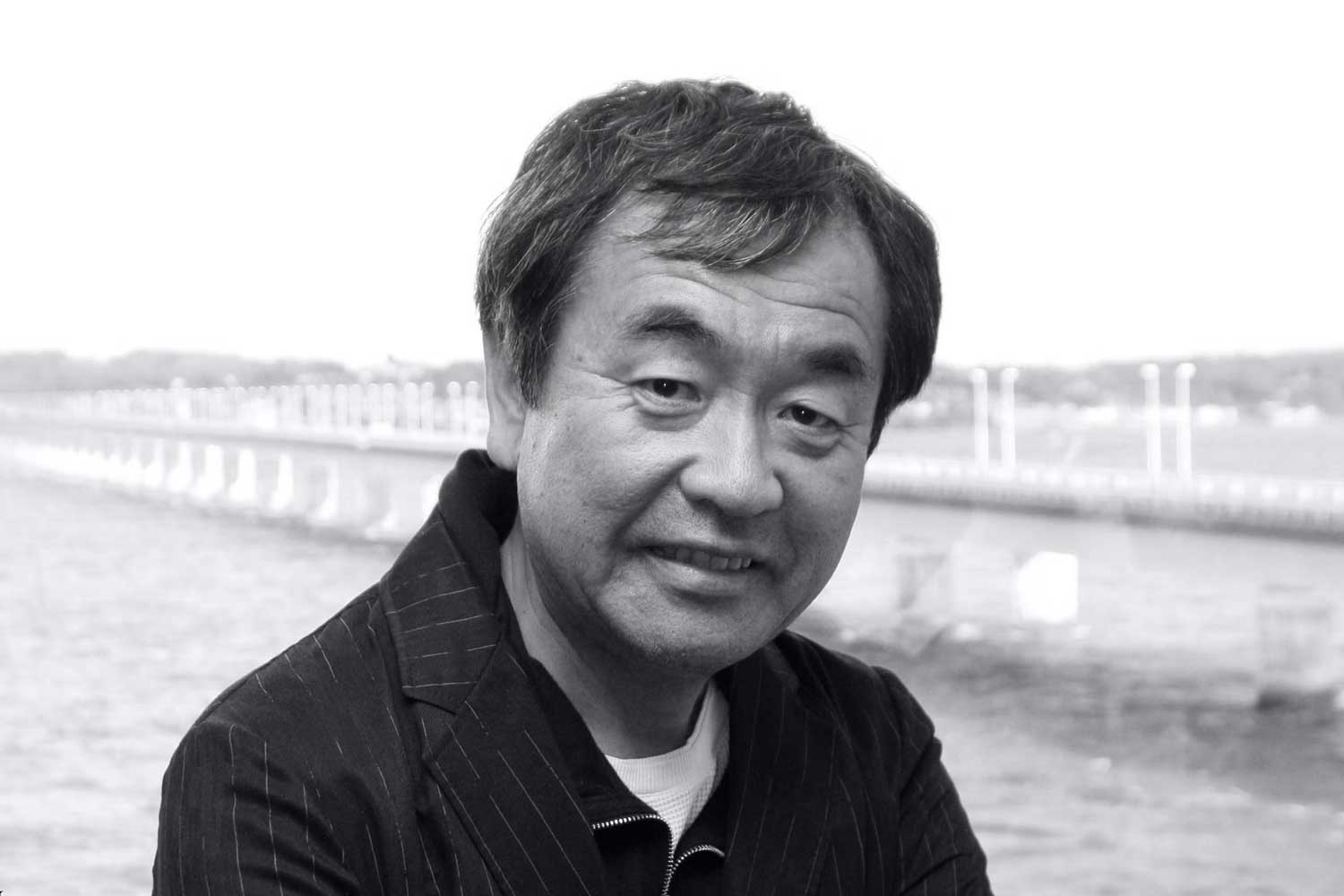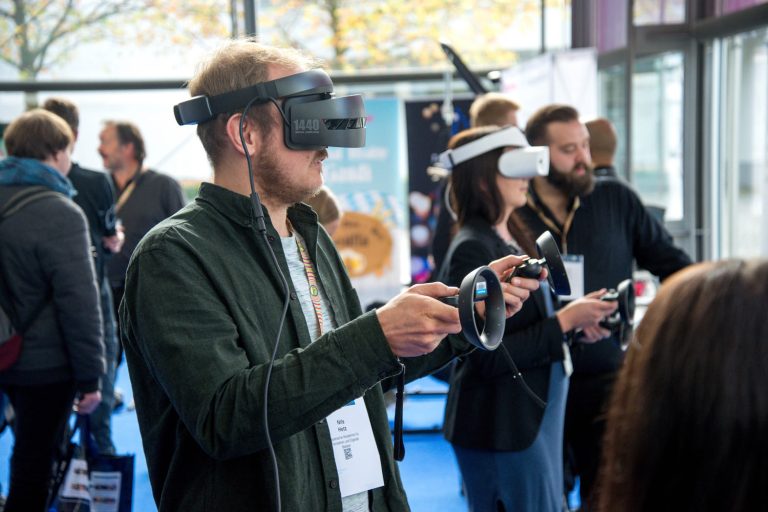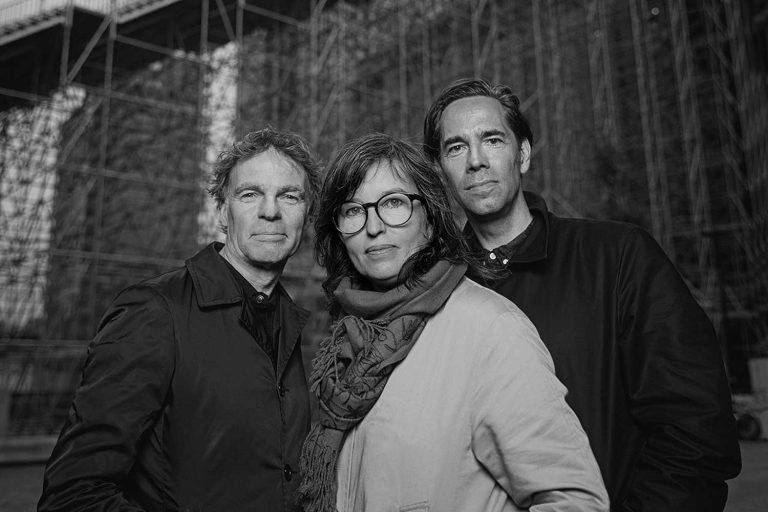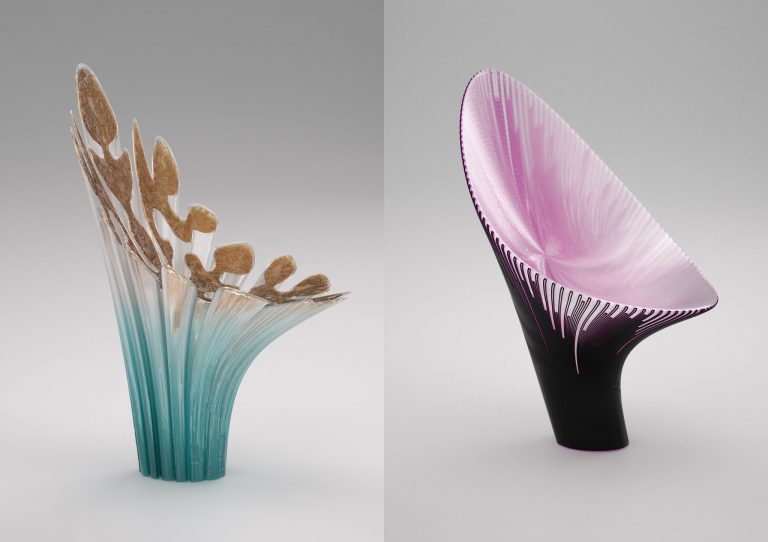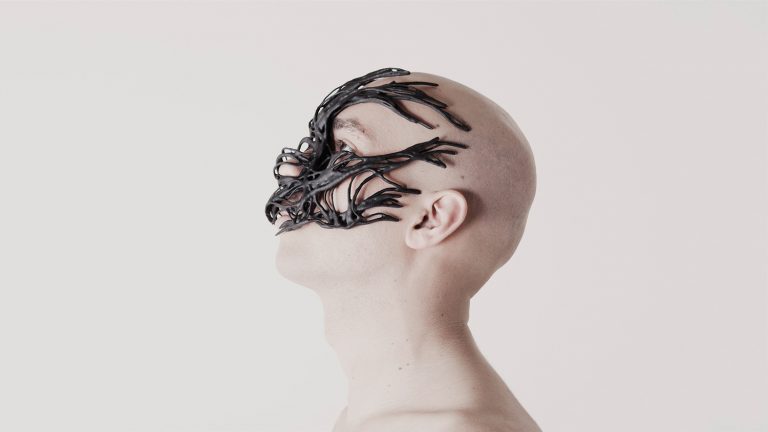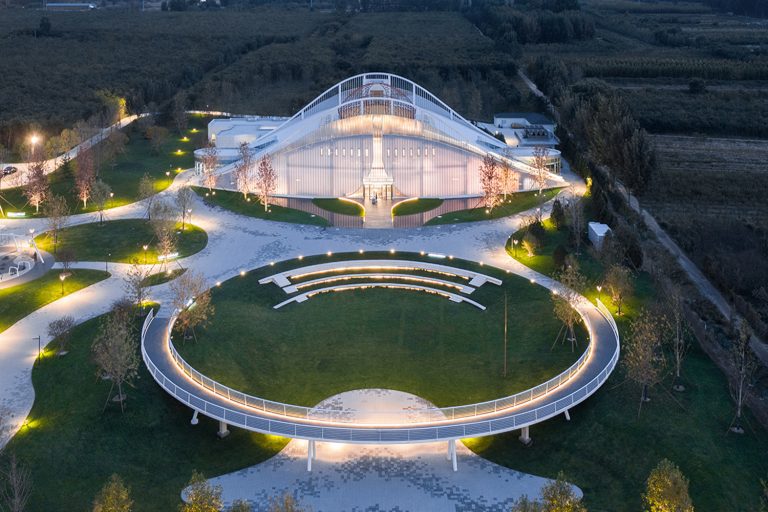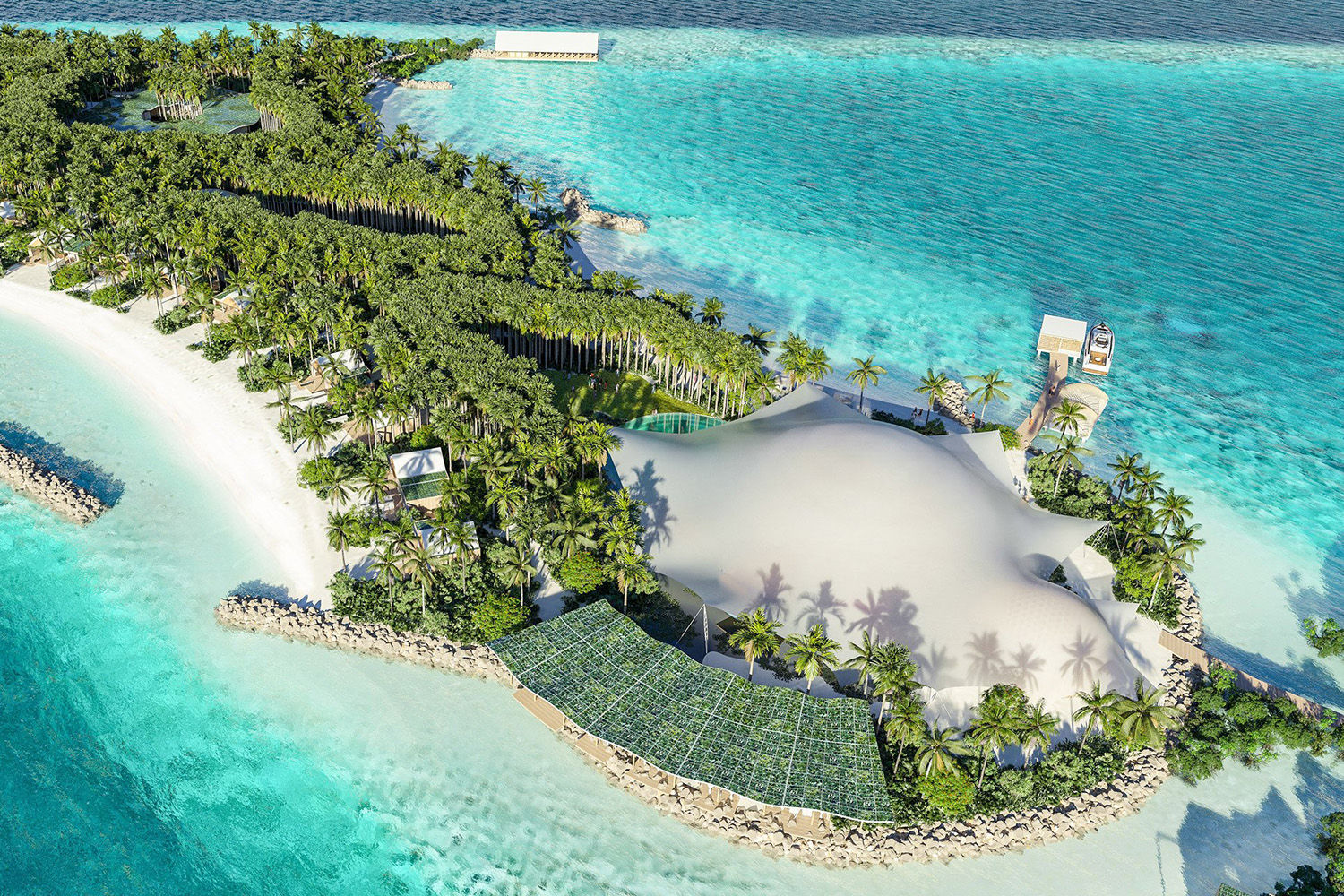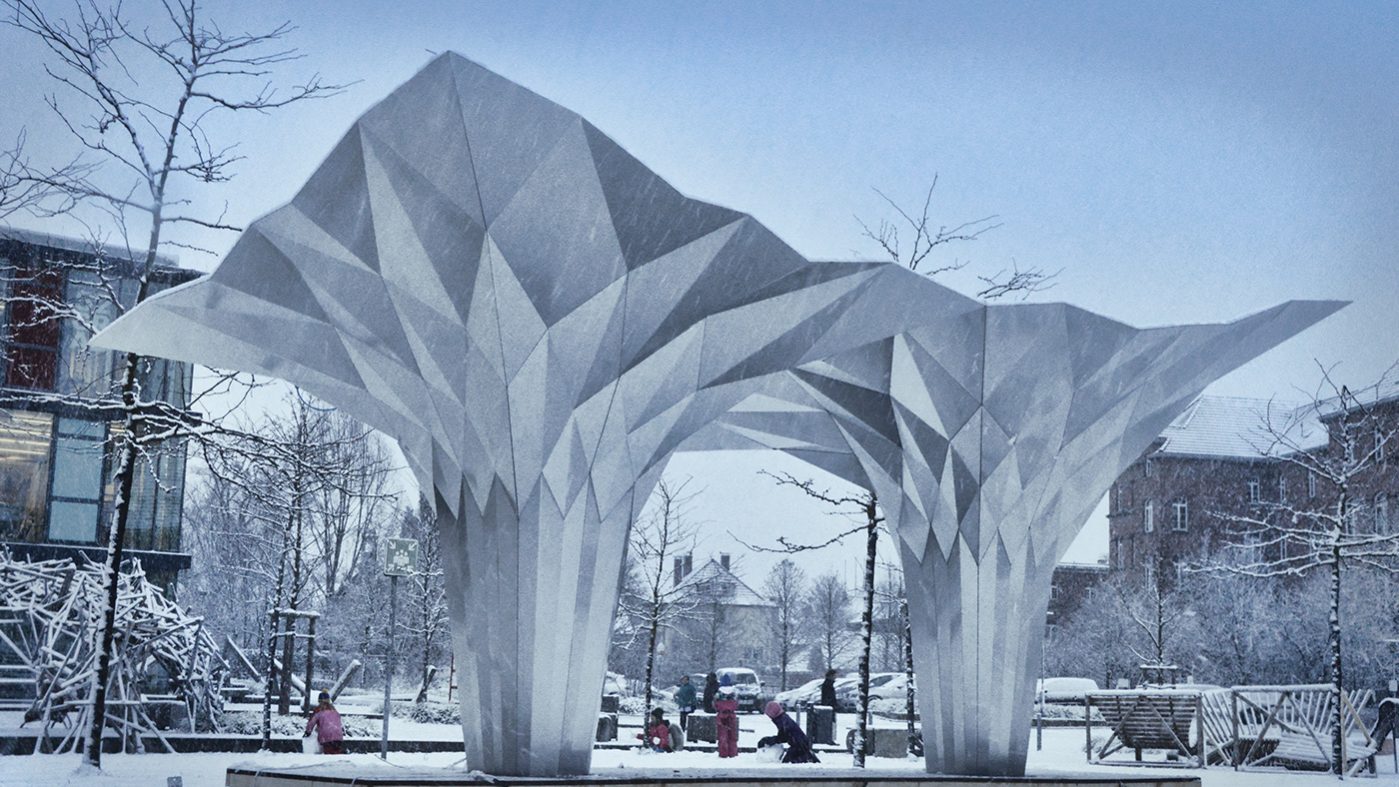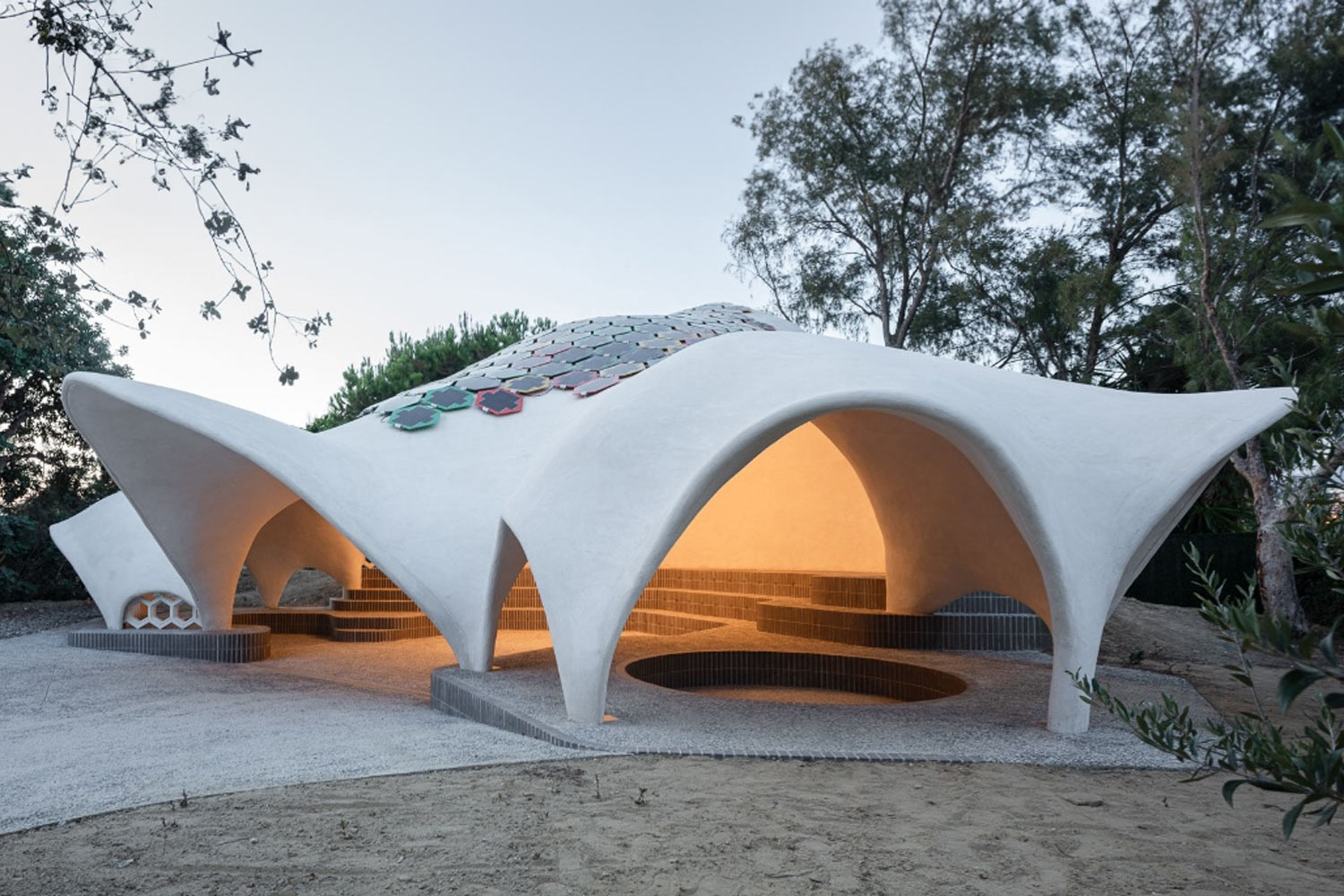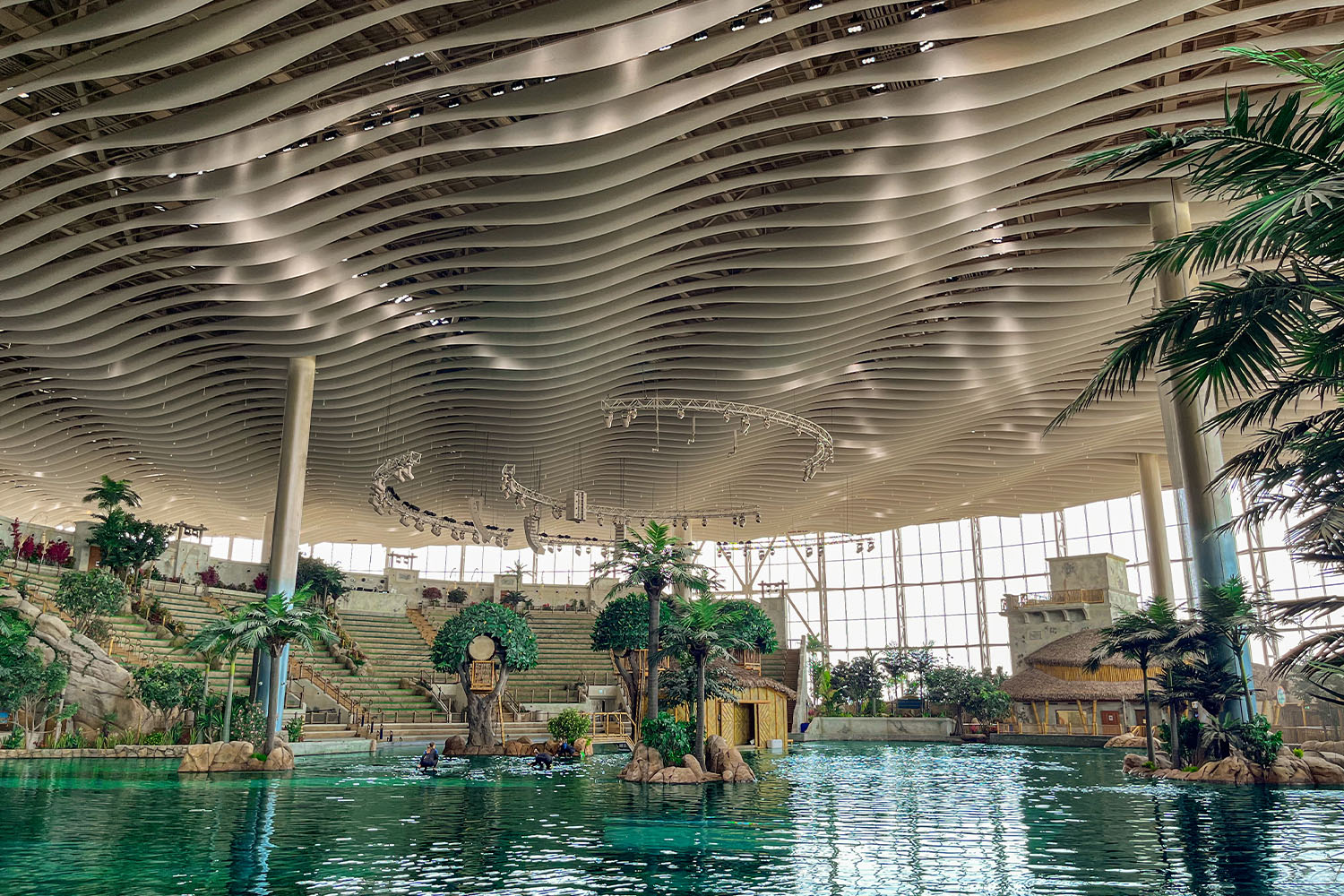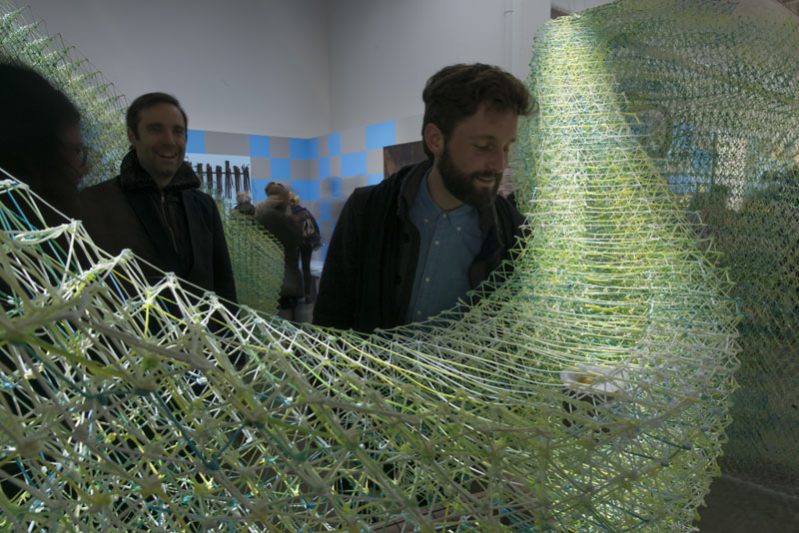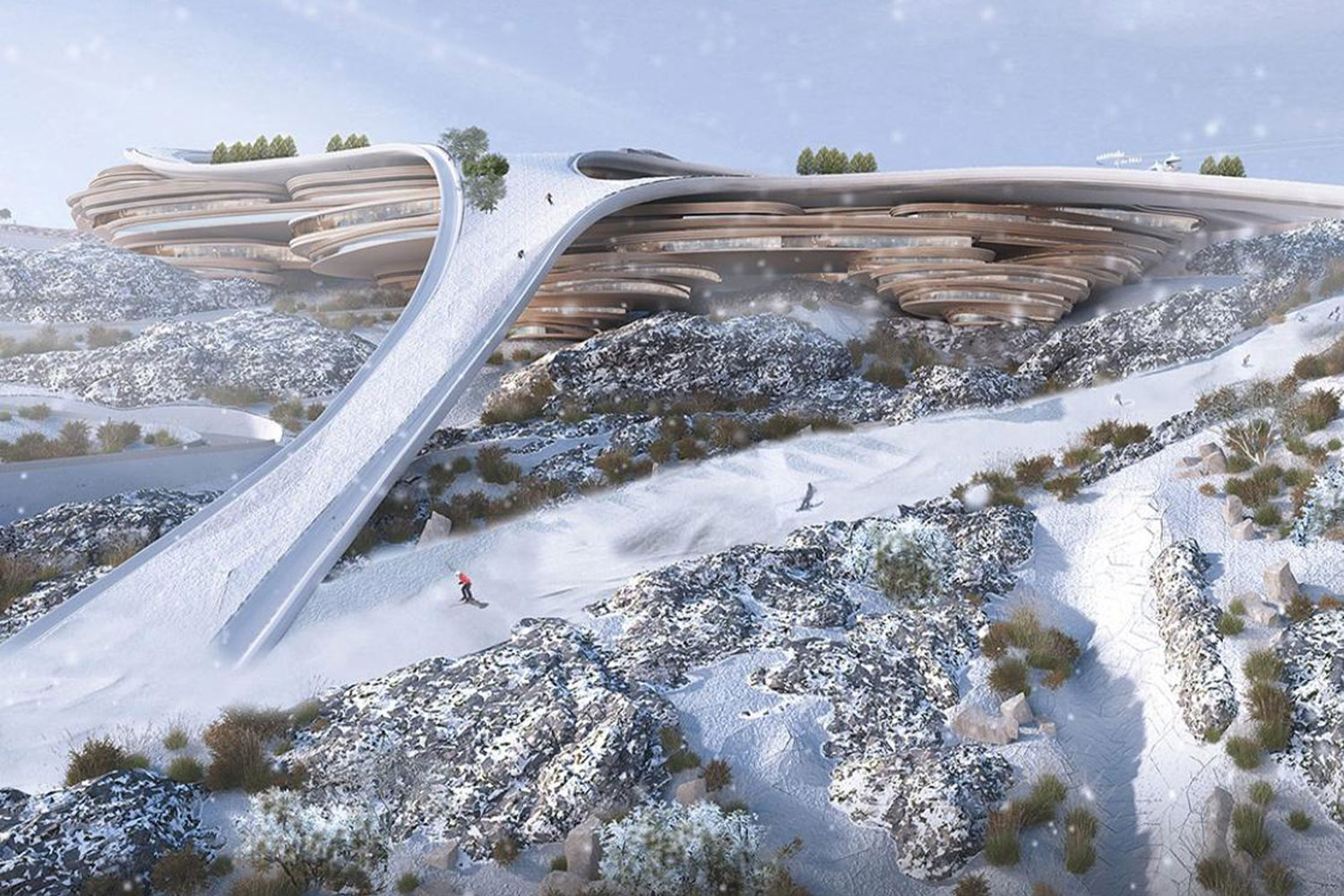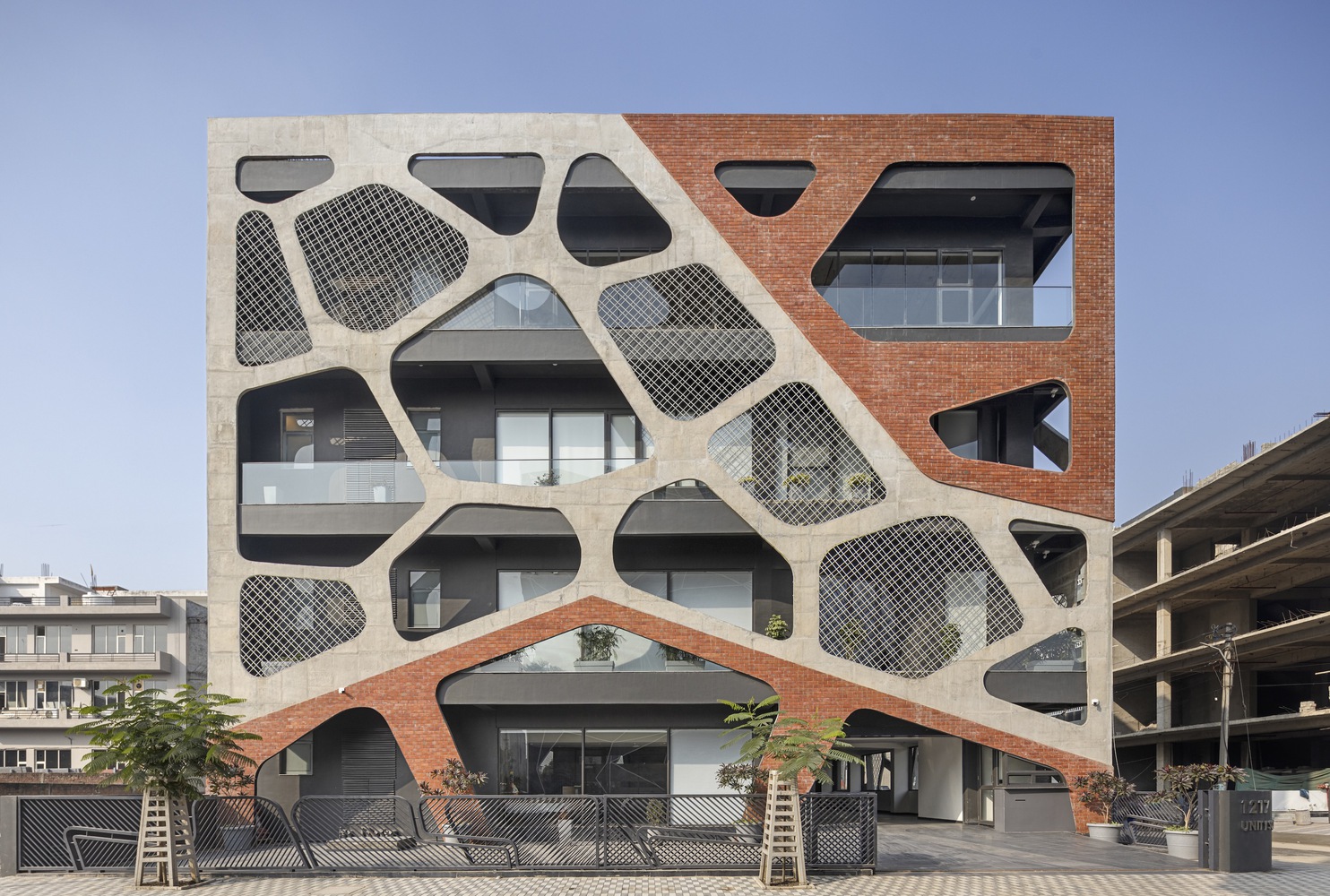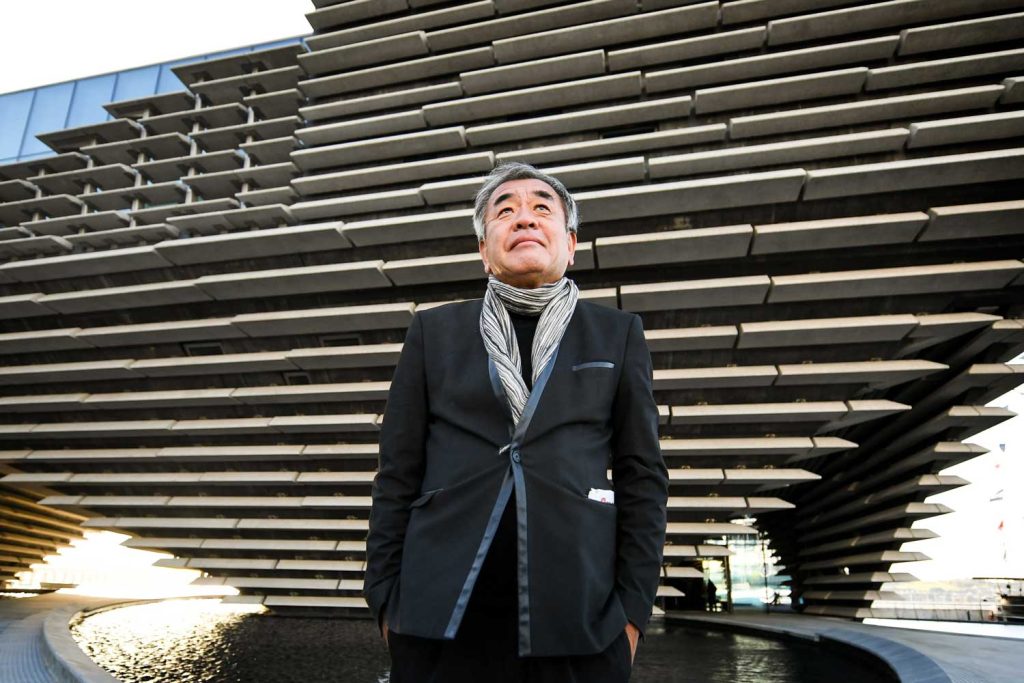
Kengo Kuma (Born in 1954) is one of the prominent Japanese Architects known for his contemporary architectural style. He was born in Kanagawa and later graduated in architecture from the University of Tokyo (1979). After graduating from the University of Columbia he worked for a short period at Nihon Sekkei and Toda Corporation. He later moved to New York to work as a researcher at Columbia University (until 1986).
He founded the Spatial Design Studio in 1987 and further founded his firm Kengo Kuma & Associates in 1990. He has taught at several universities such as the University of Columbia, and the University of Illinois, as a professor at the University of Tokyo where he also runs several research projects within his laboratory Kuma lab.
“Instead of stepping forward, designers need to remain completely open to visitors’ needs. Only then will we have a space without boundaries and paths. The space may consist only of an unprocessed cluster of particles – scattered rubble and grass – none the less, countless places will emerge and a network of relationships will develop the moment someone steps foot inside.”
Kengo Kuma
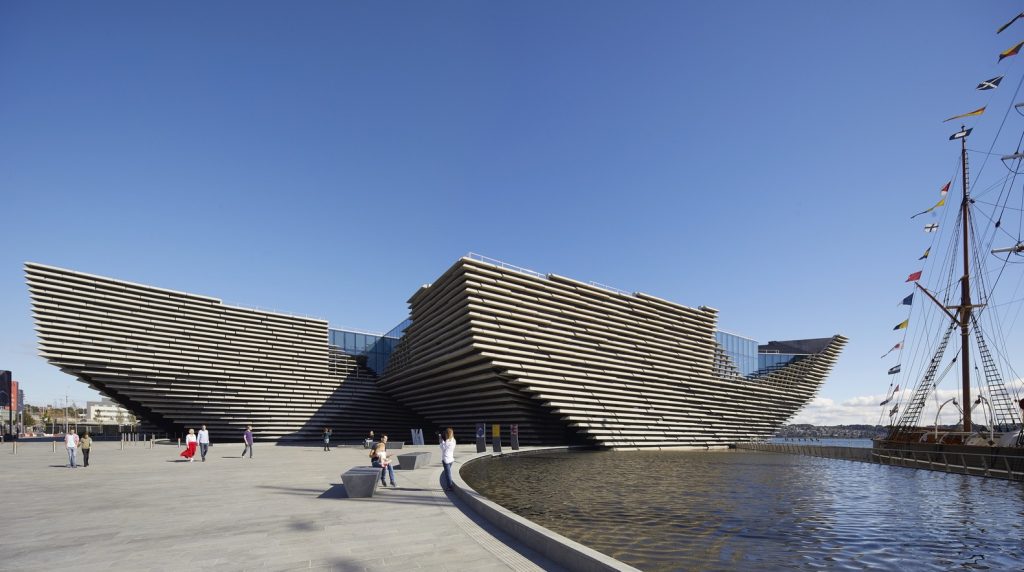
His design philosophies revolve around reinventing natural materials. His architectural structures aim to recover traditional Japanese buildings by reinterpreting them into modern designs. He utilized and treated materials as they were light wood and utilizing them as such. Manipulation of light with nature through materials was a keen interest in his designs.
Connecting spaces (Outdoor and Interior space connections) is a characteristic feature of Kuma’s design. Transparency is another feature used in Kuma’s design inspired by Japanese architecture. The use of light and utilized natural materials creates a unique transparency feature.
“Architecture forms a vital link between people and their surroundings. It acts as a gentle buffer between the fragility of human existence and the vast world outside. How different people choose to build connections in their environment essentially defines those societies and their relationships to conditions around them.”
Kengo Kuma
Kuma does not focus only on utilizing light materials in his design but expands and researches material utilization. He has experimented with and utilized modern technology in creating and treating traditional materials as light ones. He utilizes technological advancement to challenge and utilize traditional materials in a more contemporary style and approach.
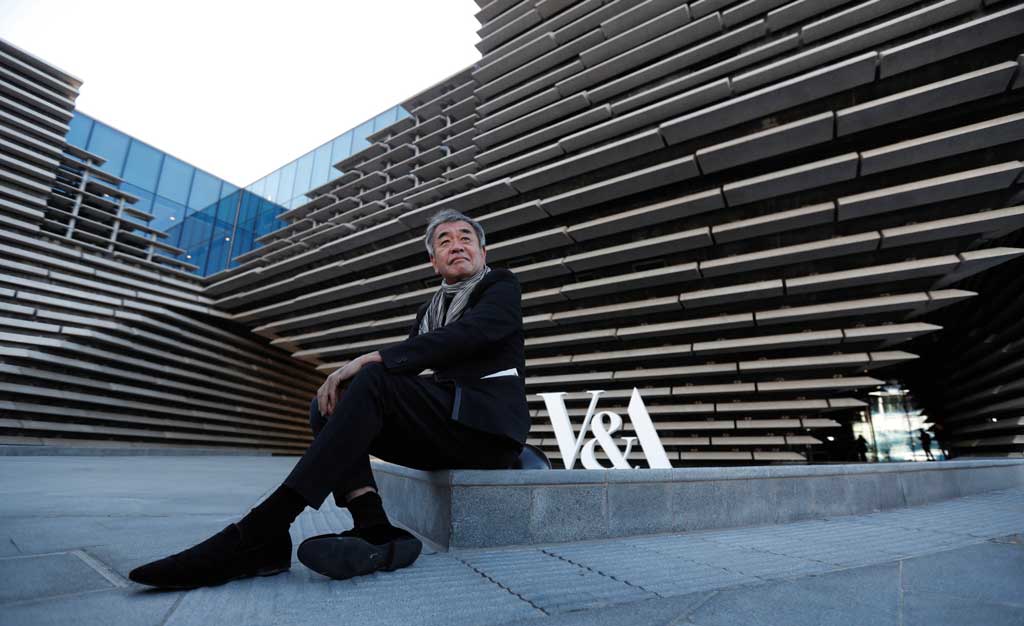
Kuma Lab is a sponsored program facility for international architecture education founded at the University of Tokyo (From 2020 over the next five years). Kuma runs several research projects regarding architecture, urbanism, and designs within the laboratory facility. The lab’s research topics are based on landscape, community, architectural urban, materials, product designs, and mechanical designs. The lab participates in activities such as architectural design competitions, joint research, workshops, etc.
The lab consists of three primary initiatives;
- International Design Studio
- Digital Fabrication Centre
- .Digital Archive Centre
Snowpeak Landstation
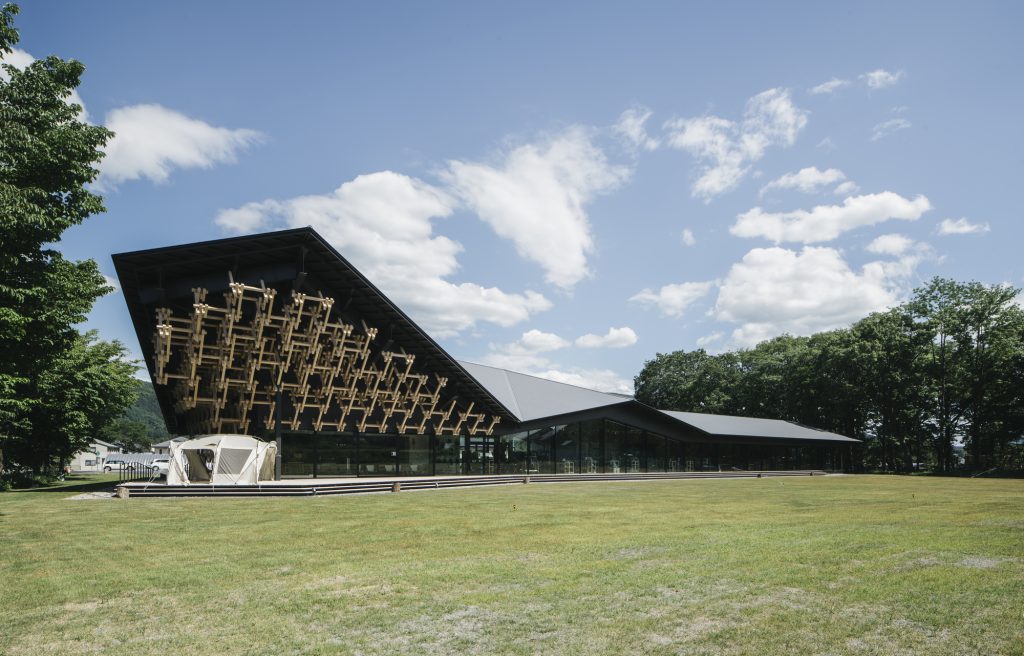
Location: Nagano, Japan
Construction: Completed in 2020
Building Typology: Mixed-use (Commercial, Recreational)
The Snowpeak Landstation is an outdoor recreation facility located in Japan that includes commercial and recreational spaces in the design. The design objective was to create economic opportunity for the Hakuba village by designing stores, café, restaurants, and outdoor activity spaces. The wooden framework utilized is designed upon the tree branch and snow crystals inspiration.
The large roof design reflects the silhouette of the three peaks of Hakuba. Internally the space is divided into several sections using fabrics that are used for tarps. The internal spaces are designed such that even if one is indoors are connected to the outdoors.
The Exchange
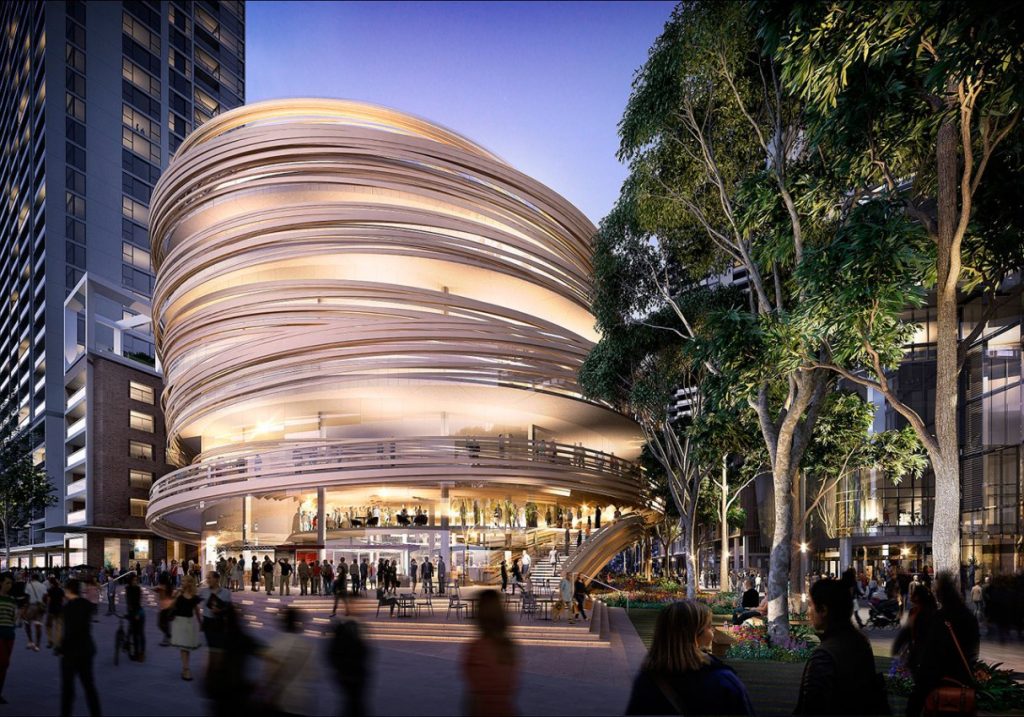
Location: Sydney, Australia
Construction: Completed in 2019
Building Typology: Mixed-use (Commercial and Public spaces)
The Exchange is a mixed-use structure comprising commercial spaces (restaurant and fresh food market) and public spaces (library, childcare). The project was planned as a part of urban development in the heart (Public movement zone) of Darling Harbour in Sydney. The objective of this community center was to create a warm low-rise structure that is integrated into the square.
The dynamic and aesthetic façade comprises 20,000 meters of light-colored wood. “The project aimed to create a project that is open and tangible to the community that is easily accessible and recognizable from several directions,” said Kuma. The organic timer stripes wrap the structure and act as a screen for harsh light to the interiors.
Asakusa Culture Tourist Information Center
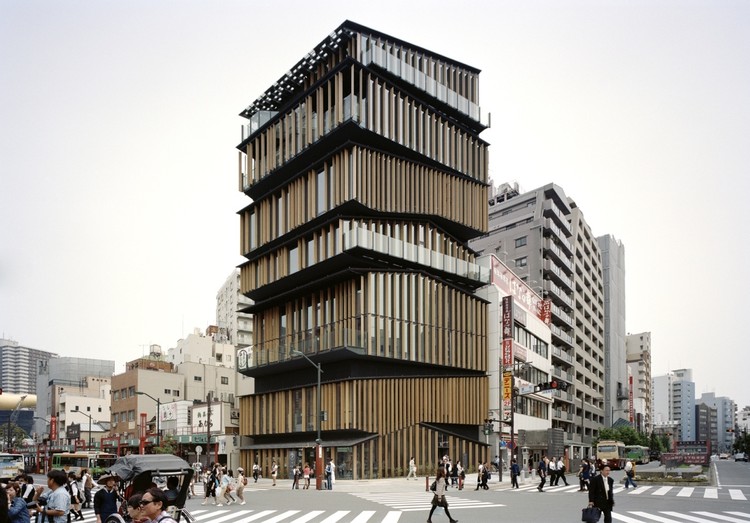
Location: Tokyo, Japan
Construction: Completed in 2012
Building Typology: Tourist Information Center
The center for cultural and tourist structure was constructed in the heart of a cultural and religious importance area. The design reflects traditional Japanese construction (Material implementation) in a contemporary design. The linear structure consists of eight bunk houses that are stacked vertically that look like stacked houses with slope roofing. The primary materials utilized for construction are a combination of steel, wood, and glass.
The structure is divided into 8 zones by the roofing system, which separates each level and has different functions. The roofs are angled towards the Kaminari-mon Gate and the heights vary from floor to floor, each floor relates differently to the ground giving a unique character to each space.
Dallas Rolex Tower
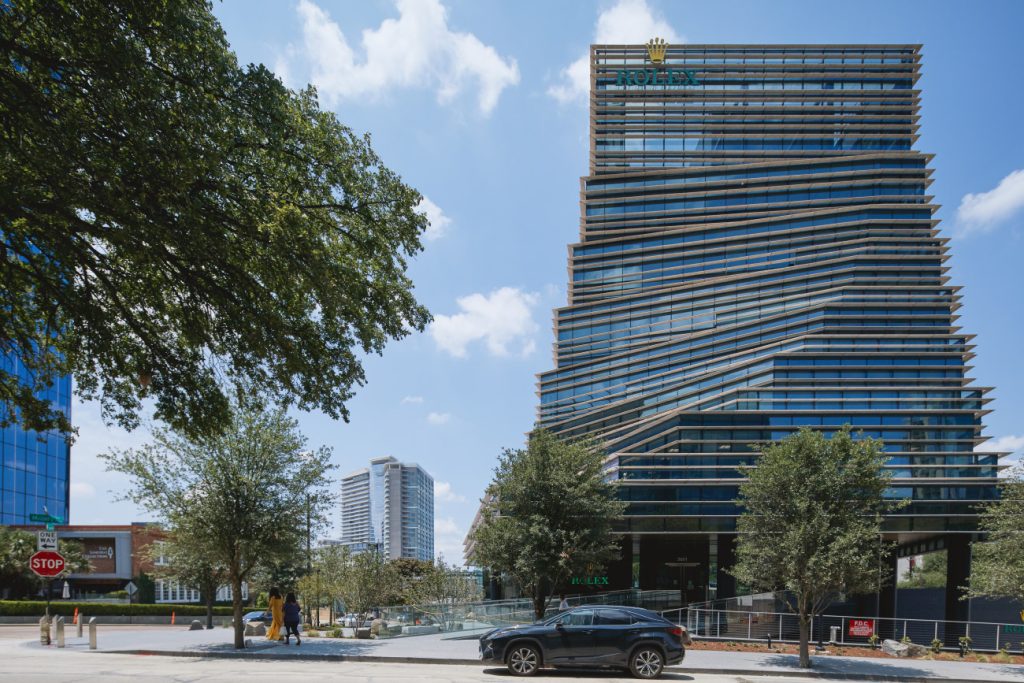
Location: Dallas, USA
Construction: Completed in 2018
Building Typology: Commercial
This tall torqued tower designed by Kengo Kuma & Associates is located in Dallas in the United States of America. This aesthetic and bold architectural form blends glass and wood in construction. The structure is a glass high-rise structure with wood utilized externally for the facade (twisted part of the façade and louvers) and the interiors. The entire tower is covered with horizontal louvers to protect it from Dallas’s harsh sunlight.
The tower sits on a granite foundation built using a Japanese construction technique (Ano Masonry). Integration of nature and landscape is one feature of Kuma’s architecture which is integrated into the lower level of the tower.
Japan National Stadium
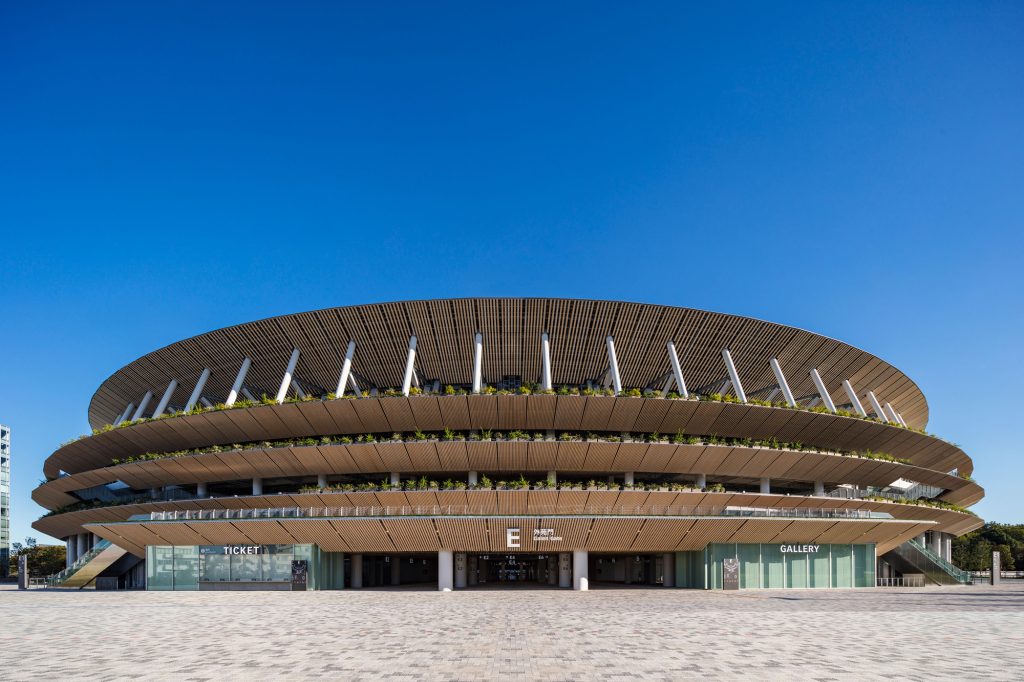
Location: Tokyo, Japan
Construction: Completed in 2019
Building Typology: Stadium
The Japan Stadium which houses a capacity of 68,000 people is located in Tokyo, Japan. The Japanese government chooses Kengo Kuma & Associates’ design for the proposal for the sports stadium for the 2020 Summer Olympics. Kuma’s signature construction material wood is extensively utilized in the design. The exterior façade inspired by Japanese eaves construction components into a multi-layered style.
Kuma’s integration with nature is depicted in the design, as the eaves are integrated with native plant species. The structure is the best example of integrating Japanese tradition, climate, and technology in the design and construction.
Suntory Museum of Art
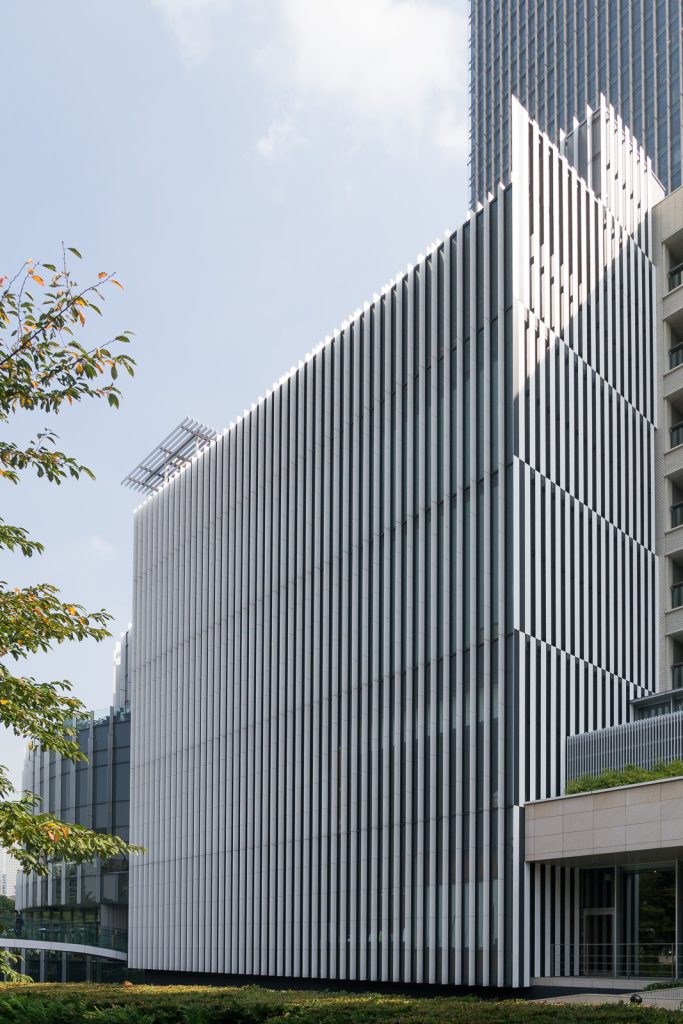
Location: Tokyo, Japan
Construction: Completed in 2007
Building Typology: Museum
The Suntory Museum of Art is an art museum located in the heart of the city of Tokyo in Japan. The museum is based on the theme “Art in life” which primarily contain Japanese antiques. The primary focus of the architect was to create a museum that has a peaceful and inviting feel amidst the hustle and bustle of the city.
The façade of the structure is composed of white ceramic panel kinetic vertical louvers. The strategic placement of these kinetic louvers helps control the light entering the structure by application of the movable screen with a sliding mechanism. The louvers are inspired by “Musougoshi” which is an old-fashioned lattice window design.
Water/Glass
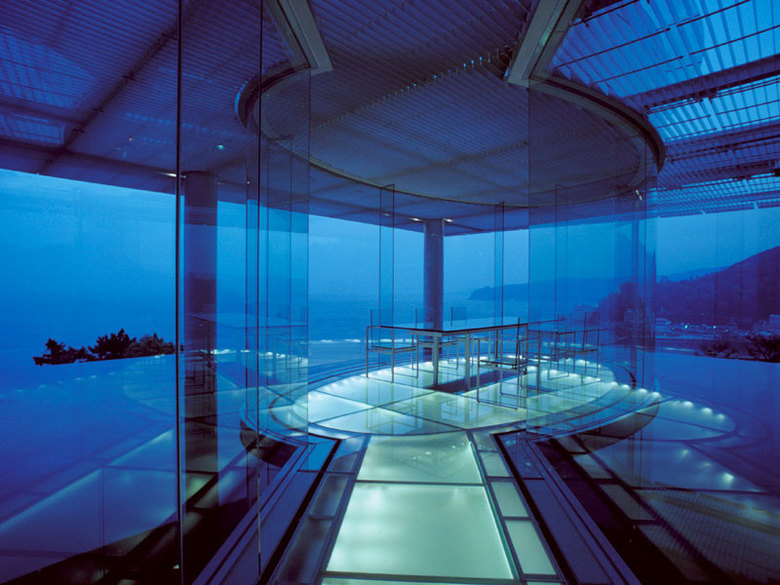
Location: Atami, Japan
Construction: Completed in 1995
Building Typology: Residential
The Water/Glass villa was designed by Kengo Kuma & Associates, its design was inspired by the “Hyunga” villa, which is a sole project that was left in Japan by Bruno Taut. Glass is the primary material utilized for construction, superimposing glass layers create several unique reflections that appear as if the structure is floating.
The villa sits on a layer of water that unites with the villa edge and further reaches the Pacific Ocean. The structure is designed and re-defined such that the structure and the environment are well integrated together.
Sakuragaoka Childcare Center
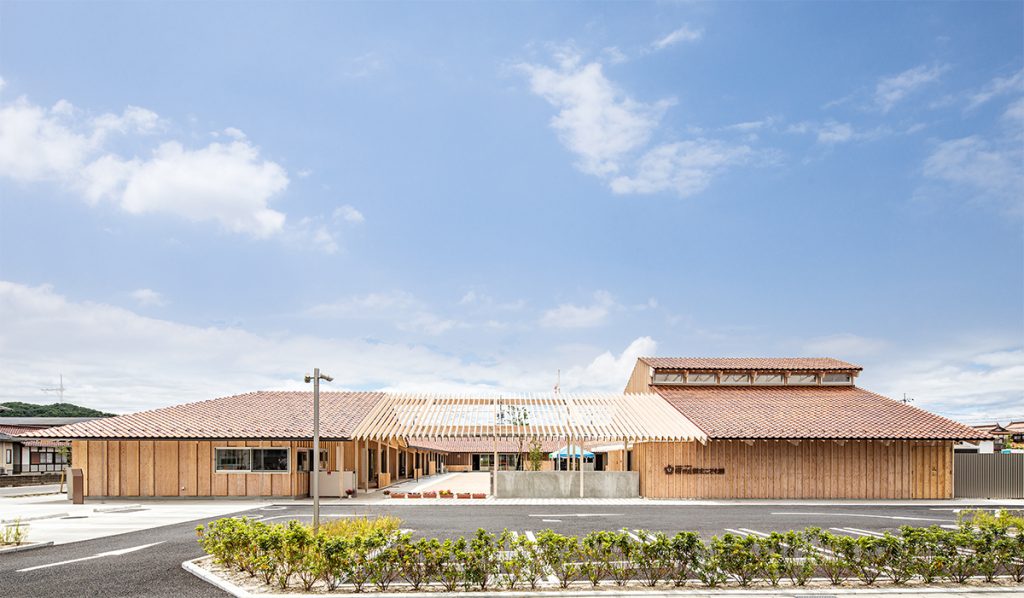
Location: Hiroshima, Japan
Construction: Completed in 2020
Building Typology: Educational
The Sakuragaoka Childcare Center is designed with characteristic warmth and brightness that is an appropriate design and material palette for children. The bright and warm interiors provide a safe and warm environment that has a positive impact on a child’s growth.
The structure utilizes red tiles roofing that is individually hand-crafted and sourced from the locality. The interiors are designed to create large bright spaces with warm and monochrome color tones in contrast to the red roofing tiles.
Odunpazari Modern Art Museum

Location: Eskisehir, Turkey
Construction: Completed in 2019
Building Typology: Museum
The Odunpazari Modern Art Museum located in the ancient city of Eskisehir is the first Modern Art Museum in Turkey. Kengo Kuma & Associates’ objective was to create a museum that acts as an architectural landmark in Eskisehir. Timber is Kuma’s characteristic material which is utilized in construction, it is designed as wooden stacks which are inspired by the neighborhood’s timber trading market history.
The 4,500 square meters museum exhibits the owner’s Modern Turkish art collection (1,000 pieces of modern and contemporary art collection). The Museum Is divided into three levels with large exhibition spaces, and small-scale artworks with installation on several levels.
Starbucks Reserve Roastery
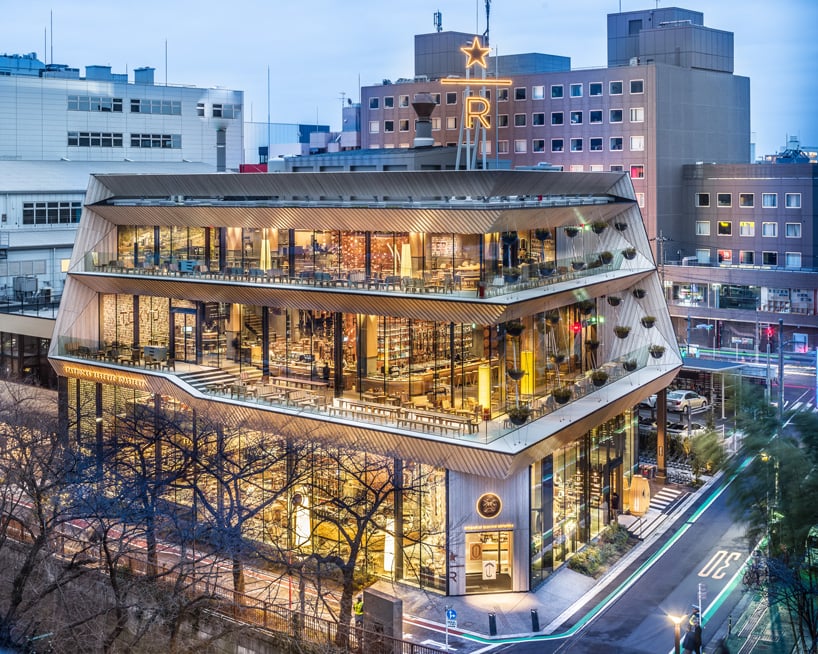
Location: Tokyo, Japan
Construction: Completed in 2019
Building Typology: Café and Factory
Starbucks Roastery located in Tokyo designed was to introduce a new café culture to the urban fabric. The Roastery is designed and planned around the giant coffee bean silo (17 meters high). The café was designed and envisioned to attract the urban fabric and liven the activity of the neighborhood.
It is located at the intersection of the streetways forming a triangle plot that includes a café with several functions such as a bakery, bar, and tea corner. The façade design is inspired by Engawa of Japanese architecture (A flooring strip that runs across the building). The eaves for the terrace are composed of Yamato-bari clad with cedar wood (Staggered to replicate a Japanese pagoda).


